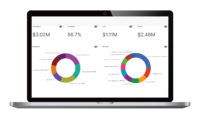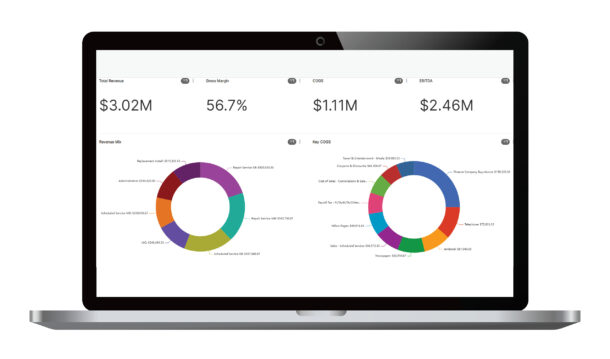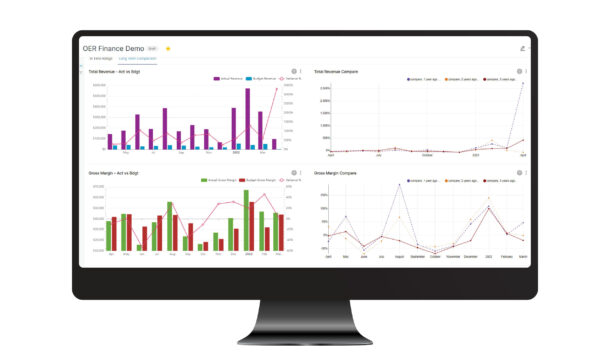A few months into the new year, the landscape of the HVACR industry continues to evolve and change in new ways. Expected shifts come from new innovations in technology, market needs for greener products, an unpredictable global economy, supply chain issues and shifting energy demands—all of which promise to make 2023 a very exciting year Read more
Guest Blog

A few months into the new year, the landscape of the HVACR industry continues to evolve and change in new ways. Expected shifts come from new innovations in technology, market needs for greener products, an unpredictable global economy, supply chain issues and shifting energy demands—all of which promise to make 2023 a very exciting year.
The economy
Let’s start with inflation, a global recession and a supply chain that continues to struggle after the pandemic. Hopefully, as the pace of inflation eases throughout the year and the job market continues to be robust, this should help the economy continue its upward movement, improving construction numbers and the HVACR industry in general. However, even if the economy dips, existing systems will still need maintenance, so service and maintenance calls are going to continue to drive the growth of our business.
Going green
Something else driving our industry is decarbonization. This push accelerating throughout the world of HVACR is driven by climate change, the insecurity of world energy supplies and new legislation, like the Inflation Reduction Act. New heat pump technology could help customers move away from using fossil fuels to heat their homes – and big tax incentives are driving their implementation. This movement also encourages homeowners and businesses to retrofit existing systems to meet new standards. As HVACR technicians, staying current with these advances is critical.
Living healthy
Residential and commercial customers are asking for healthier, energy-efficient homes and buildings. They care about the comfort of their homes and their businesses, but they’re also focused on the well-being of the planet. As a result, they’re investing in systems and technologies that optimize energy use. In addition, the pandemic brought wellness, ventilation, air quality, thermal health and humidity to the forefront. All of this is going to shape our industry over the coming year.

New technology
As we move towards using more sustainable components and refrigerants in our systems, technology and innovation are both going to be key drivers. Throughout the last decade, we’ve witnessed the segment’s most significant technological revolution. We’re seeing new electronic tools, cloud-based solutions, higher efficiency ratings, mini-splits systems, new codes and new control strategies driving product development and helping HVACR systems deliver new solutions for customers. As HVACR technicians, we need to stay ahead of these advances which have the potential to transform how HVACR professionals are trained and how we do our jobs.
Welcome to the new HVACR industry
It’s an exciting time to be part of an industry that benefits so many people every day. At Fieldpiece, we’re looking forward to developing the new tools that help HVACR techs install, diagnose and repair these evolving and ever more innovative systems. We’ll keep current of all the latest trends and help ensure that your tools are ready for the jobs to come!

The reality is it can be daunting to choose business management software. There are numerous options available in the marketplace today and many facets to consider. Having the ability to effectively dispatch your teams in the field, streamline your accounting data flow and access your business metrics at the touch of a button are all Read more
The reality is it can be daunting to choose business management software. There are numerous options available in the marketplace today and many facets to consider. Having the ability to effectively dispatch your teams in the field, streamline your accounting data flow and access your business metrics at the touch of a button are all valuable features you may want to set your team up for success. It can take time to properly evaluate the needs of your business and feel confident that you are making the best selection, but starting with these three areas will help you begin narrowing down your choices:
Features: Sure, there are many tasks you are probably looking to manage in the daily operations of your team, but which ones are the most important to your business? Consider separating your list into features that are an absolute must and those you would enjoy but could run your business successfully without. If one platform checks more of those “must have” boxes, then you will have identified a leading candidate.
Processes: Think through the current process you use for job management and make note of the positives and negatives that come to mind. What is working well, and what could use a new approach? Sometimes writing down the steps in your current process can help you visualize how it could be improved in a new system. For instance, some software systems may have more automation than you currently do, making it easier to get the job done.
Stakeholders: Anyone on your team who will be using the platform should have a say in this evaluation process. They know what is needed to make things run smoothly. You will want to include all relevant team members in brainstorming exercises and any meetings you have with vendors to demo the product. Don’t forget your IT team so they can ask any hosting, data conversion, or implementation questions.
Now that you’ve taken some initial steps to evaluate the features you need and want, the processes you’re trying to improve and the feedback of your team members, it’s time to ask some more in-depth questions to make sure you’re finding the right business management software for you. Here are the top questions to consider:

What features does the software have?
You already thought through your must-have and nice-to-have features, so go back to that list and see how many boxes you can check off. If you have already identified that you absolutely must have a user-friendly dispatch board, a top-notch accounting module or a management system to keep your agreements and maintenance visits flowing, then you know those are non-negotiable features.
Don’t forget the ones on your nice-to-have wish list either. Once you weigh all your options, you may decide having key performance indicators and business metrics available at the touch of a button is a feature you really do want to add to your toolkit.
Another important thing to consider when evaluating features is how many are built directly in the software and what would you have to purchase separately – whether that be from another vendor that could potentially integrate with the software or add-on features from the software you choose.
Even if you know you won’t use all the features right away, it may be worth it to go with a field service management software that has numerous options built into the software, so you have those options down the line.
Is there accounting built in?
Do you want your service data to be connected to your financial information without the need to sync data or enter it into two different platforms? Or do you have an existing accounting software system that you want to make sure will integrate with your new platform? Whichever camp you are in, accounting is an important area you want to consider.
Think of it this way – you have two options. You can go with a standard accounting software and then purchase dispatch tools that sit on top of that software, or you can look for an all-in-one platform that has accounting built-in, eliminating the need for an additional payment to an additional software company.
Does it integrate with any other vendors?
Speaking of integrating…you may be using other existing vendors for things like your pricebook, online reputation management and document storage. Finding a software system that makes integration seamless with these other vendors will help you continue with business as usual.
Is the Customer Service team responsive?
You are guaranteed to have questions during migration and as you get deeper into the software. Many of these will be pressing questions that can be the difference between increased or lost revenue. There’s a lot on the line for your business, so whatever system you go with, make sure the provider has a responsive customer service team that will get back to you promptly.
Is the software hosted on a physical server, or is it hosted in the cloud?
The safety of your data is a top priority. The cloud typically offers more security benefits – data backup, disaster recovery, increased performance and more – than traditional hosting on a server.
You should also ask yourself if the ability to work from anywhere is important to you. If you answered yes, then a cloud-hosted software system is the way to go. With traditional servers, you can only access your files from the location of the physical server.
How easy is it to migrate my current data over to the new platform?
Data migration can be a nerve-wracking time for a business owner, but moving into a new platform should be easy and secure. Make sure your new provider is available to walk you through every step of the process, ensuring all your important data is captured as it is being imported into the new software.
How easy is the system to learn and use?
The ease-of-use to a new software platform can make or break your transition. Ideally, you want the system to be user-friendly and intuitive for your office staff and techs to pick up and learn. If they need significant training or have more questions than answers, you will need to factor in whether or not there are resources provided to give extra help adapting to the new software. Extra help from the software provider might look like a dedicated Customer Success Manager or online training courses available on demand.
What is the cost?
Last, but certainly not least, cost is a significant factor when considering a new business management software. No one wants to break the bank, so look for something that can grow and scale with your business at a reasonable price.
Don’t let the magnitude of your business management software decision keep you from pushing forward to a better way. Yes, it will take some time and consideration to find the right fit that will have your business humming along at its most streamlined and efficient, but working through these steps and questions will help you move beyond analysis paralysis and into success.
 Chris O’Grady has been in sales for 30 years, focusing on software sales for the last 20. Chris has been leading and growing sales teams for most of his career, with his most recent positions at FinancialForce and CBORD, where he led high-performing sales teams and was able to help drive tremendous growth for each company. In April 2022, Chris joined Successware as the Chief Sales Officer. He brought with him a proven history of business growth and increased sales performance. In his current role, Chris leads sales, sales operations, and customer success and is responsible for driving sales strategy.
Chris O’Grady has been in sales for 30 years, focusing on software sales for the last 20. Chris has been leading and growing sales teams for most of his career, with his most recent positions at FinancialForce and CBORD, where he led high-performing sales teams and was able to help drive tremendous growth for each company. In April 2022, Chris joined Successware as the Chief Sales Officer. He brought with him a proven history of business growth and increased sales performance. In his current role, Chris leads sales, sales operations, and customer success and is responsible for driving sales strategy.

December is a time for closing out the books and putting a bow on all of your accomplishments over the past year, but it’s also an important month to set business goals and intentions for what’s to come. Good or bad, the year behind us has been a learning experience. It’s crucial to evaluate successes Read more
December is a time for closing out the books and putting a bow on all of your accomplishments over the past year, but it’s also an important month to set business goals and intentions for what’s to come. Good or bad, the year behind us has been a learning experience. It’s crucial to evaluate successes and take stock of shortcomings so you can continue to build your business and grow in the right direction for the future.
No one likes to dwell on failures, but it’s essential to identify and learn from them if you want to avoid repeating the same mistakes. What flopped for you this year? What do you wish you had done differently? These things should all be taken into account when you think of the year ahead.
Now, take the same inventory of what went well for your business. Was there a standout marketing campaign you might want to expand on next year? Did your team improve in any key areas that you want to keep focusing on?
Once you have a good handle on what’s in your rearview, there are four main areas to consider as you plan for the year ahead. Consider them New Year’s Resolutions for your business.
Resolution #1 – Review and update your business plan
You’ve probably heard the famous quote about failing to plan is planning to fail. It’s a classic for a reason – planning is key to continued growth and success for your business. All those decisions you encounter in the course of daily work will be resolved much more easily if you have a solid business plan leading the way.
Now is the time to take stock of your plan. Hopefully, you have already thought through what worked and what didn’t work over the course of the last year. Make sure your business plan is updated to reflect those key learnings. Moreover, the plan should reflect the mission, vision and goals you have laid out for your team.
Most business plans follow a similar outline. Review the following sections and update them as needed:
- Executive Summary and Company Description – What is it that your company does at its core? This will help guide the rest of your business plan and strategy.
- Market Analysis – What is at the forefront of your consumer’s mind? What are your competitors doing? Use this information to help you determine what markets you should focus on.
- Services Offered – Have you expanded your list of services? Focused more on some services and less on others? Writing these out gives clarity to your technicians and sales team to know where they should focus their efforts and help you prioritize what you want to be promoting and selling.
- Marketing & Sales Plan – What marketing campaigns have brought in the most leads for your business? Do you want to try new tactics next year? A clear marketing and sales strategy is critical; see Resolution #2 below for more information.
- Financial Projections – Did you come in over budget? Under budget? Use data from your current year to determine how much you think your business will grow; more on this in Resolution #3.
Resolution #2 – Give your marketing plan a refresh
Increased revenue comes from a clear marketing and sales strategy that helps you attract and keep customers both old and new. A robust marketing plan is essential, so you’ll want to spend some time refreshing yours for the new year.
Again, start with a look at the current year in review, making note of any marketing campaigns that brought about results or fell short of expectations. When you see something that worked – a healthy number of leads from a social media channel or direct mail, for instance – allocate more money in that direction next year.
Do you have a calendar of promotions/deals you want to highlight throughout the year? Consider creating a social media strategy to support them. Promoting one deal each month could be a good rule of thumb, and you’ll want to set a plan for the content you want to post and when you want to post it.
If you don’t already have a monthly email newsletter in your toolbox, consider adding one as a cost-effective way to reach your customers with your marketing messages – deals/special offers, new products or services or any content that will further convey all that your business has to offer.

Successware provides access to key business analytics at the touch of a button with Successware Insights™. These metrics will help you analyze your current year financials and set realistic growth goals for the new year.
Resolution #3 – Set realistic growth goals
If you set a business growth goal that is too high, you run the risk of unrealistic expectations that can lead to demotivation and ultimately failure. Use your financial metrics from the current year to root yourself in reality.
Did you meet the numbers you forecasted this year? Are you coming in way over or under budget? Look at the goals you did not achieve this year and think about what roadblocks you encountered. What might it take to reach those goals next year? Maybe you need to add services or products, or you may want to consider beefing up your team with an additional technician or truck. All of these can lead to additional revenue that you should include in your forecast.
Sometimes your goals have changed, and your updated plan needs to reflect that. Defining your sales, marketing and revenue goals will help tremendously when updating your business plan and budget for the new year.
Another benefit of clearly defined goals is helping your team know where their efforts need to be focused. They can also help you identify any tools or training they need to help reach those goals.
Resolution #4 – Focus on building a great company culture
Demand for skilled trades workers continues to increase as the number of qualified applicants decreases. Your company needs to up its recruitment and retention game if you want to thrive. One of your biggest goals for the new year should be to build the kind of positive work environment and culture that employees don’t want to leave.
In order to create that great company culture, resolve to:
- Communicate with your employees. Be open about what’s going on with the business and any upcoming changes that may affect them.
- Be open to feedback. Employees often have great ideas on how to solve the problems with systems or processes they encounter on a daily basis, so listen to what they have to say and work with them to find solutions
- Invest in their growth with additional training or help in obtaining needed certifications or licenses. When you believe in them and help them reach their goals, they will be more inclined to help you reach yours.
Now that you and your employees have a clear direction to follow throughout the year ahead, you can enjoy ringing in 2023 knowing you have a solid plan for operating and growing your business. You’ll be ready for the highs, lows and everything in between that makes business ownership such a rewarding adventure. Happy New Year!
 Paul Carmody has over 20 years of experience as a senior executive in Software-as-a-Service, technology-enabled services, internet infrastructure, and supply chain/manufacturing industries. He has served as a key executive in five successful exits and one IPO. He is currently President of Successware, an Authority Brands company. He previously served as COO of Nicus Software in the Information Technology Financial Management industry. He was also General Manager (GM) of a business unit at E2open, a provider of cloud-based, on-demand software for supply chains. Before that Paul was GM of Strategic Businesses at Change Healthcare, a $1.2 billion company backed by Blackrock that merged with McKesson Technology Solutions.
Paul Carmody has over 20 years of experience as a senior executive in Software-as-a-Service, technology-enabled services, internet infrastructure, and supply chain/manufacturing industries. He has served as a key executive in five successful exits and one IPO. He is currently President of Successware, an Authority Brands company. He previously served as COO of Nicus Software in the Information Technology Financial Management industry. He was also General Manager (GM) of a business unit at E2open, a provider of cloud-based, on-demand software for supply chains. Before that Paul was GM of Strategic Businesses at Change Healthcare, a $1.2 billion company backed by Blackrock that merged with McKesson Technology Solutions.
Prior to that experience, Paul was CEO of AchieveIt, a SaaS business that provided a results management and strategic planning software platform to hundreds of businesses across the globe. He has held senior executive roles at Internap, Cbeyond, Rackspace, and Broadlane. He began his career as a consultant at McKinsey & Company.
When not ensuring that things are thriving at Successware, Paul is spending time with his wonderful family – wife Teresa and two daughters.

Propane and solar complement each other to reduce emissions, increase resiliency When it comes to reducing emissions for commercial construction projects, no single energy source is the answer. Using different energy sources together is the best way to reduce emissions and increase resiliency. Construction professionals and their customers can use propane and solar energy together Read more
Propane and solar complement each other to reduce emissions, increase resiliency
 When it comes to reducing emissions for commercial construction projects, no single energy source is the answer. Using different energy sources together is the best way to reduce emissions and increase resiliency. Construction professionals and their customers can use propane and solar energy together to reduce their carbon footprint and remain resilient. After all, commercial buildings account for nearly 35 percent of the electricity consumed in the United States.
When it comes to reducing emissions for commercial construction projects, no single energy source is the answer. Using different energy sources together is the best way to reduce emissions and increase resiliency. Construction professionals and their customers can use propane and solar energy together to reduce their carbon footprint and remain resilient. After all, commercial buildings account for nearly 35 percent of the electricity consumed in the United States.
Solar is the most common renewable energy source. However, relying on intermittent solar power alone isn’t sustainable. That’s where propane can help. Propane on its own is a viable energy solution, and when used with hybrid systems that include solarPV, the combination further reduces emissions and increases reliability. Here’s what you need to know about both systems and how they complement each other:
Propane and solar are a powerful combination.
Most construction professionals already know that solar power is a clean energy option; but most buildings can’t rely just on solar technology. Using propane and solar together, is an excellent way to reduce emissions while meeting a customer’s energy needs. On the continuum of energy choices, from clean to dirty, propane is closer to cleaner renewables than it is to dirtier coal, oil, and wood. Propane produces 43 percent fewer greenhouse gas emissions than using an equivalent amount of electricity generated by the U.S. grid. That’s because propane is used as a primary energy source on site.
Propane-powered technologies produce fewer nitrogen oxide (NOx) and sulfur oxide (SOx) emissions than technologies fueled by electricity, gasoline, and diesel. Because NOx and SOx contribute to acid rain formation and cause respiratory ailments, manufacturers must comply with laws limiting these emissions.
Together, propane and solar are resilient.
Construction professionals are installing large solar systems to help lower price premiums when grid electricity is more expensive and reduce emissions. However, solar power is only feasible if the sun is out. For true cost control and reliability, businesses need to consider adding propane power to help keep their operation running clean and efficiently if their solar power system can’t handle the full load.
When builders combine propane alongside solar, they provide customers with the resilience of whole-building standby protection. For example, propane standby generators are permanently installed on-site, providing quiet, efficient, and clean peace of mind. Power kicks in almost instantly when needed so there’s no disruption to critical systems like heating and cooling, lighting, or refrigeration.
The more energy dense systems that are powered by propane, the less solar energy it needs to run LED lights and fans. Incorporating propane into major systems for building heating and water heating will decrease the amount of solar power necessary, which creates a more cost efficient and resilient solution.
A new study from PERC called, Power Generation: The Emissions Shifting Problem, looks at the recent trends in power generation, microgrids, and how propane systems and solar can work together. Microgrids help improve the resiliency of local electricity distribution systems, that’s part of why they’re growing in popularity. They represent a groundbreaking approach that helps solve several of the problems facing California’s cities.
To provide an alternate power solution to customers located in Mariposa County, solar energy company BoxPower and generator manufacturer Generac provided solar PV with battery backup and a propane generator as a solution to reduce wildfires in one of California’s high-risk areas. Instead of ruggedizing the transmission and distribution (T&D) lines, which could cost more than one million dollars per mile in remote locations, electric utilities deenergized the T&D lines and installed these microgrid solutions to avert forest fires
These microgrid systems are one example of how using propane and solar provide peace of mind. They help businesses increase safety and resiliency, allowing them to retain their clean operation even with a power failure.
For contractors interested in improving a building’s carbon footprint in an affordable and reliable way, propane is a viable energy solution. Using propane with solar power systems reduces emissions and increases reliability. Visit Propane.com to learn more about the benefits of using propane in your next project.

Bryan Cordill is director of residential and commercial business development for the Propane Education & Research Council. He can be reached at bryan.cordill@propane.com.

By Brittany Spencer, Nexstar Network Business Coach This is it, everybody: it’s business planning season. Plenty of companies in the trades are building their business plans and gearing up to put them to work. Budgets are being made; goals are being set. As a business coach, I see a lot of the same issues crop Read more
By Brittany Spencer, Nexstar Network Business Coach
This is it, everybody: it’s business planning season. Plenty of companies in the trades are building their business plans and gearing up to put them to work. Budgets are being made; goals are being set.
As a business coach, I see a lot of the same issues crop up each year during this season, and I’m here to offer a few quick tips on making sure your business plan is ready for takeoff.

-
When building your plans, involve your whole team.
I can’t stress this one enough. Any business plan you build on your own is your plan – not your team’s plan. And if it’s only your plan, why would anyone else care about achieving the goals you’ve set? You need to get buy-in from your team. Make sure your managers are the ones who build the business plan. Get every department head to commit to what they can do next year and let them talk things over with one another. Allow space for your team to offer up concerns and disputes – this is their business plan, after all, and disputes and concerns are going to occur when people are invested in the plan! Once concerns are addressed and settled, have your key managers sign off on the business plan. When everyone has signed off on the plan, it’s set!
-
Tell the whole company.
Have your managers communicate the business plan down to the rest of the company employees. Everyone in your company needs to know about and understand the business plan for next year. Not just managers! Your technicians need to know. Your CSRs and dispatchers need to know. Your install team, your sales team, accounting… heck, your parts-runners need to know! Why? For transparency, and to get everyone rowing in the same direction. A new plan can affect everything, from your working hours to which member of the team communicates with the pallet company you use. How are all your employees supposed to know what success for next year looks like if you don’t show them what they’re shooting for? Consider displaying your company goals in large poster-format somewhere visible to all employees, like in the break room.
-
Break down your business plan into smaller pieces.
Your business plan goals look great! They also might look lofty to the average employee. You can help your entire team by breaking down your business plan into smaller pieces, such as by department.
Let’s say you’re breaking down the goals for your HVAC department first. Part of the plan for the HVAC department is that they’re going to add three technicians in the coming year. OK: who’s going to be responsible for recruiting those technicians? When does that recruiting start? When are interviews going to happen? When do you need to have all three technicians in trucks, running calls?
If you have five different departments, and they all have recruiting goals for the coming year, you’ll need to have someone who’s responsible for recruiting in each department. And if you’re adding people, you’ll need more trucks! Break it down. What’s the current lead time on getting trucks? Who’s going to order them? Who’s going to make sure they get fitted out and wrapped?
Break those goals down by month, then week! Then break them down by day, and make sure you have daily huddles or short stand-up meetings with your team about each day’s goals. You win your year by winning your day. The more days you win, you can then catapult into winning your week, then your month, and ultimately your year. Your team can generate action items daily to create change where needed. And all you’ll need to worry about is making sure your revenue formula is getting the needed calls, converting those calls, and lastly converting those calls at the right average sale.
See what I mean? You need steps for each goal of your business plan, or nothing’s going to get accomplished. Take your business plan and break it down into smaller pieces, assign people to each piece, and assign deadlines to the people. You’ll reach your business plan goals this year!
 Brittany Spencer is a business coach at Nexstar Network. Shas worked in the residential service industry as a financial controller and a general manager for the plumbing, electric, and HVAC trades. She’s passionate about helping members improve their day-to-day operations, financial results, employee ranks, and customer satisfaction. She can be reached at brittanys@nexstarnetwork.com.
Brittany Spencer is a business coach at Nexstar Network. Shas worked in the residential service industry as a financial controller and a general manager for the plumbing, electric, and HVAC trades. She’s passionate about helping members improve their day-to-day operations, financial results, employee ranks, and customer satisfaction. She can be reached at brittanys@nexstarnetwork.com.
